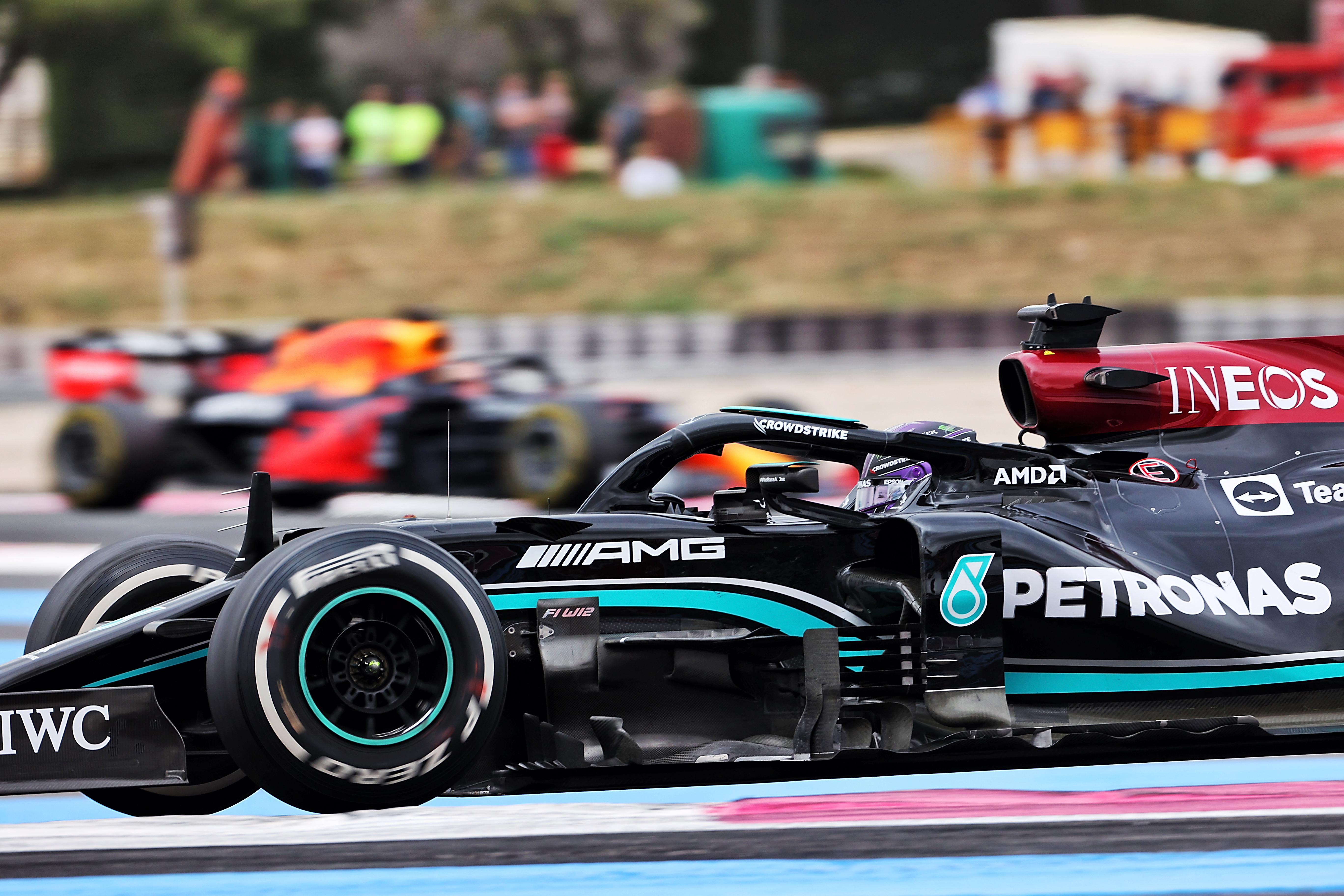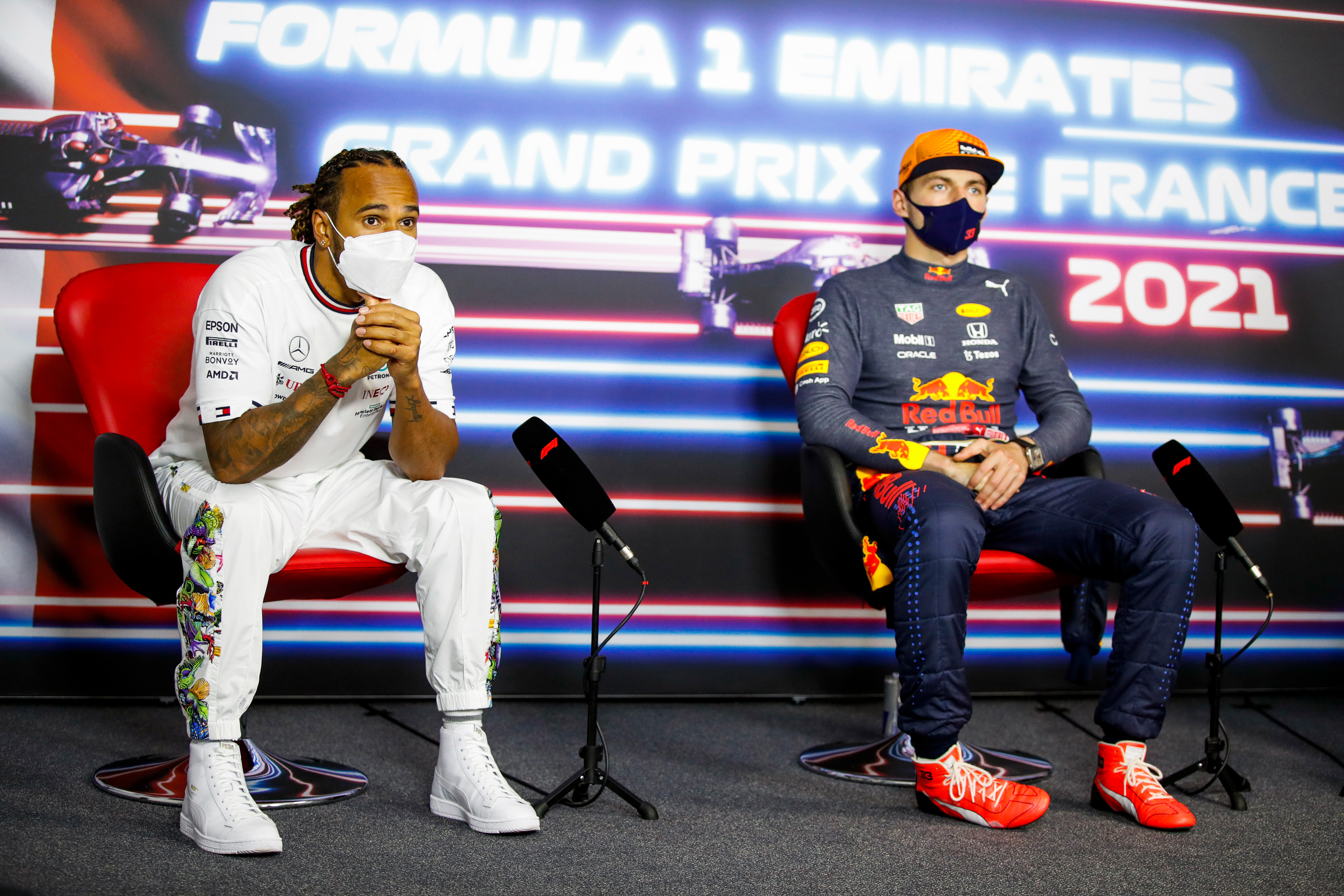Up Next

Mercedes was not alone in its underestimation of Max Verstappen’s undercut in the French Grand Prix – the Red Bull driver also had no idea he was about to jump Lewis Hamilton.
The confidence Mercedes had in Hamilton’s lead of just over three seconds was shown in the decision not to pit him one lap after Bottas – the same lap Verstappen stopped.
Mercedes waited one more lap, giving Verstappen the chance to cut into the gap with fresh tyres but not – Mercedes thought – sufficient opportunity to take the lead outright.
So it was completely thrown when Hamilton was passed on the inside into the first corner after exiting the pits, having expected Hamilton to rejoin ahead.

Hamilton was told after his pitstop that Verstappen should be 1.5s behind, but clearly, that was wrong. It seems likely that specifically was race engineer Peter Bonnington relaying outdated information.
Instead, the conclusion to Verstappen’s mega outlap, combined with Hamilton losing four tenths in the pitlane, had swung it enough towards Verstappen for him to dive inside at Turn 1.
Mercedes trackside engineering director Andrew Shovlin admitted on Sunday evening: “We thought when he had just over three seconds to Max, we were safe from the undercut, and that wasn’t the case.
“And even now, we don’t fully understand why our model was telling us that we would have been ok.
“Clearly there is something we need to go off and understand there.”
Verstappen’s great pace on the fresh hard tyres was clearly key to the undercut, as even he admitted it was “very unexpected” to be able to take so much time out of Hamilton.

Shovlin suggested Mercedes had still not quite worked out where it had come from on Sunday evening, stating that “we can account for about two and a half seconds of the three seconds, but there’s something we need to dig into the fine detail to understand how we were undercut from so far back because we weren’t expecting that”.
The time Verstappen gained on Hamilton on both his inlap (0.6s) and outlap (1.8s), and 0.46s less in the pitlane, pretty much accounts for the gap that was eradicated.
As teams are able to use live data from mini-sectors, not just the three main sectors, they usually have a pretty robust real-time prediction of where they will rejoin from a pitstop.
So as Verstappen got closer to finishing the lap, Mercedes’ model should have suddenly twigged that, actually, Hamilton was vulnerable.
Only by then, it was way too late to do anything about it.
How much of a mistake was it? It seemed huge at the time, and Mercedes’ own confusion hinted at it being something preventable. But Verstappen’s own surprise points to just how unlikely an outcome it was.
“It was very unexpected because I honestly thought I had a good outlap but I thought I would just slot in behind him,” said Verstappen.

“And then I saw he was coming out of the pits and I had an opportunity to go for it.
“I didn’t expect the undercut to be so big, but when I went out I suddenly had so much more grip on the tyres everywhere.
“Nobody – including us – expected to undercut Lewis.
“It just clearly showed that with new tyres [the benefit in] the tricky conditions out there.
“When you’re on used tyres of course it’s easier to lose the car a little bit or whatever because of the wind.
“So, with new tyres you have one lap where of course everything feels a lot better.”

The power of the Verstappen undercut meant that as soon as Red Bull stopped first, Hamilton and Mercedes were done for.
Once Mercedes’ system had enough data to project that Verstappen was actually a threat, it would almost certainly have been too late to make any difference.
The most accurate projection would only have been known once Hamilton was in the pits and the final mini-sectors of Verstappen’s outlap were showing exactly how much he was gaining. And there would have been nothing more Hamilton could do to try to maintain a safe margin anyway.
Nonetheless, Mercedes seemed in no rush to cover its tracks or declare this wasn’t a mistake.
Instead, Shovlin reflected on it as a serious missed opportunity, given it set in motion a sequence of events that led to Verstappen winning on an aggressive two-stop strategy – snatching the lead back from Hamilton on the penultimate lap, something that may not have been possible without the few seconds lead he was able to build before his second pitstop.
“We could have won the race,” said Shovlin. “We could have had two cars on the podium.
“And we are in a championship where we can’t really afford to let these opportunities go by the way we did.”






